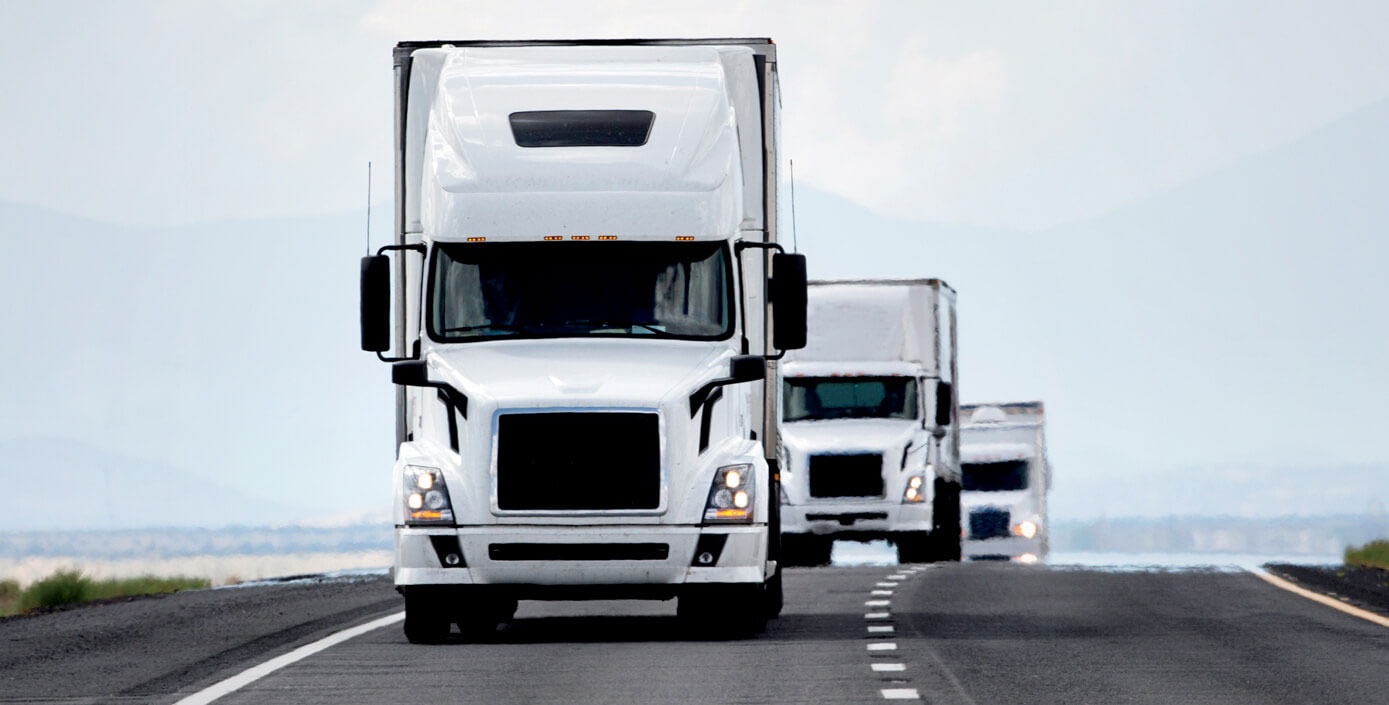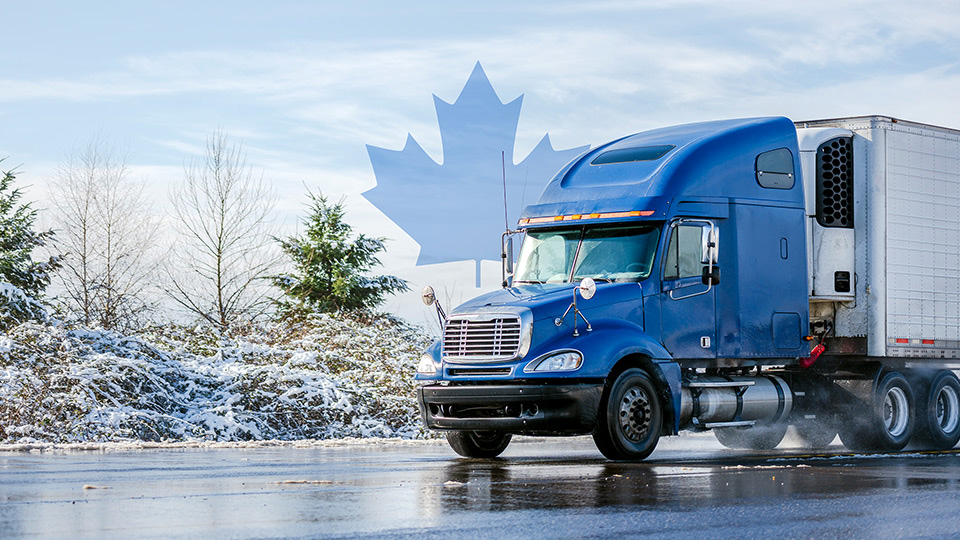
Combating rising fuel prices with fuel performance incentives

Table of Contents
With fuel prices rising, how do you create a fuel incentive that drivers buy into?
Fuel prices are rising, cutting into fleet profitability
Fuel is one of the biggest expenses for fleets. In fact, American Transportation Research Institute (ATRI) studies have shown that it’s the second highest expense, behind driver wages. And on-highway diesel fuel prices have been consistently rising since November 2020, with the average price per gallon of on-highway diesel fuel up 38%, resulting in higher operating costs for heavy-duty trucking fleets.
Even though fleets can’t control the price they pay at the pump, load weights, routes, and terrain, they can significantly reduce the amount of fuel they consume. How? By focusing on improving driver fuel efficiency.
Even in modern trucks, with the latest and greatest drivetrain technology, aerodynamics and spec’ing, driver behavior impacts the amount of fuel each truck consumes, and this impact can be as large as 30%. The most effective and impactful way to increase driver fuel efficiency is for fleets to adopt a comprehensive fuel coaching and analytics solution focused on driver fuel efficiency behaviors.
Key elements of an effective and impactful technology solution:
- Automated, consistent and unbiased real-time driver feedback. Coaching in real-time is more effective in positively changing behavior, because it occurs in step with the behavior rather than hours, days, or weeks after the fact. So, it’s important that the telematics device is capable of recording data and coaching in real-time through a built-in audio device/speaker.
- Automated reporting empowers driver trainers for efficient and effective secondary coaching conversations without having to dig through data.
- A measured driver fuel performance metric that’s fair to the driver, and not impacted by variables outside of the driver’s control.
The effectiveness of consistent driver feedback
Why is real-time, in-cab audible coaching the most impactful way to change fuel-inefficient driver behavior? When a driver walks away from a single, or infrequent, fuel-efficiency coaching session, their memory naturally fades over time.
Consistent, automated feedback reinforces the changes needed to increase the driver’s fuel efficiency. Coaching in real-time, when the fuel-inefficient behavior occurs, strengthens the memory of how to conserve more fuel while driving.


The importance of secondary coaching
In addition to the real-time feedback, fleets that have successful programs focused on improving driver fuel efficiency have a secondary coaching process where driver trainers connect with drivers, one-on-one. In these sessions, trainers help answer driver questions about how they can improve their fuel efficiency using the tools provided by the fleet. This feedback loop is a critical element in creating meaningful driver engagement and buy-in to the program.
In these coaching sessions, it’s important to focus on what the driver’s doing well in addition to the areas where they have opportunities to improve. Use the data from the technology solution chosen for this program to individualize the coaching sessions. Using the driver’s own fuel efficiency performance data makes these coaching sessions meaningful and impactful.

Using a fair driver performance metric
Driver buy-in is critical. And using a fair driver fuel performance metric is critical to gaining driver buy-in. Historically, the only fuel performance metric fleets had was miles per gallon (MPG), but drivers know that MPG is not a fair metric by which to monitor their fuel performance because it’s impacted by so many variables outside of their control (e.g., load weight, route, terrain, truck config).
Instead, focus on the driver’s measured fuel efficiency from your technology solution. The driver’s measured fuel efficiency solely reflects the driver’s fuel performance, factoring out variables outside of their control, drivers will be much more likely to buy-in.

Key elements of a successful driver fuel incentive
Some drivers will buy-in to the program because they understand it will benefit the entire organization, but others need/want an incentive.
Key elements of a successful driver fuel incentive include, but are not limited to:
- Commit to the program: Getting buy-in from your entire organization, from the top down is critical to a fuel incentive program’s success. Senior and operations management must be seen and heard supporting the initiative.
- Provide tools: For drivers to successfully and consistently achieve high fuel efficiency, they need the appropriate tools to not only monitor their progress towards achieving the fleet goals but also solicit individualized feedback on how they can improve in areas where they may have questions or need additional coaching.
- Set goals: When designing a fuel incentive program, make sure the objectives are not only clearly defined but are achievable by drivers. By using a tool that analyzes and quantifies a driver’s impact on fuel efficiency, reasonable and realistic goals and expectations can be set (and measured) based on data.
- Provide meaningful incentives: Learn from drivers what is important to them and what would be attractive to them. It may be cash or gift cards, but it also may be things like new equipment options, or improved benefits.
- Communicate early and often: Letting the entire organization know the importance of the program, the approach you’re taking to achieve its goals, and the incentives for reaching them is essential. After kick-off, communicate regularly about the fleet’s performance and its progress toward meeting the program’s goals. Highlight successes so that drivers can see what high performance means. (Social media can be a great tool here.)
- Use KPIs: The metrics used to measure fuel use incentives must be fair to the driver and fleets should avoid those that aren’t under a driver’s complete control. Letting drivers know how their performance will be measured and giving them access to the information helps drivers understand ways to improve.
- Foster participation: Bring drivers into the process of rolling out the program. Early buy-in helps. Soliciting feedback from drivers about what’s working well and what can be improved will drive up their interest and participation, and the amount of effort they put into it. Taking action on their feedback will show drivers that the organization is fully committed to the program and that they are critical to its success.
- Coach the plan: Have a coaching process in place for drivers who are having trouble meeting goals, and just as importantly for continued engagement make sure they know that coaching is part of the plan.
.png)
Additional benefits to a successful driver fuel incentive program
Fleets that implement a successful driver fuel incentive program not only see a reduction in their fuel consumption but also see the added benefits:
- Increased driver engagement
- Increased driver retention
- Increased safety
- Lower carbon emissions
- Lower maintenance costs
Learn more about Vnomics True Fuel on the Geotab Marketplace
About Vnomics
Founded in 2008, Rochester, NY-based Vnomics Corp. provides True Fuel, a proven fuel saving technology that enables trucking fleets to reduce fuel expense by improving driver and vehicle performance in real-time. Fully integrated with Geotab’s GO Device and MyGeotab, True Fuel® combines in-cab driver coaching with automated, easy-to-use fuel efficiency data to help commercial trucking operations and their drivers get the highest possible MPG from every vehicle in their fleet, under any operating conditions. This patented approach to improving driver and vehicle fuel performance is reducing fuel consumption in a rapidly growing number of fleets across all motor carrier and vocational segments, all truck OEMs and all engine and drivetrain configurations. True Fuel is available through leading telematics providers as a value-added upgrade or as a standalone product directly from Vnomics. For additional information, visit www.vnomicscorp.com or call 855-866-6427.
About Geotab
Geotab is advancing security, connecting commercial vehicles to the internet and providing web-based analytics to help customers better manage their fleets. Geotab’s open platform and Marketplace, offering hundreds of third-party solution options, allows both small and large businesses to automate operations by integrating vehicle data with their other data assets. As an IoT hub, the in-vehicle device provides additional functionality through IOX Add-Ons. Processing billions of data points a day, Geotab leverages data analytics and machine learning to help customers improve productivity, optimize fleets through the reduction of fuel consumption, enhance driver safety, and achieve strong compliance to regulatory changes. Geotab’s products are represented and sold worldwide through Authorized Geotab Resellers.
To learn more, please visit www.geotab.com and follow us @GEOTAB and on LinkedIn.
About Geotab
Geotab is a global leader in connected vehicle and asset solutions, empowering fleet efficiency and management. We leverage advanced data analytics and AI to transform fleet performance, safety, and sustainability, reducing cost and driving efficiency. Backed by top data scientists and engineers, we serve over 55,000 global customers, processing 80 billion data points daily from more than 4.7 million vehicle subscriptions. Geotab is trusted by Fortune 500 organizations, mid-sized fleets, and the largest public sector fleets in the world, including the US Federal Government. Committed to data security and privacy, we hold FIPS 140-3 and FedRAMP authorizations. Our open platform, ecosystem of outstanding partners, and Marketplace deliver hundreds of fleet-ready third-party solutions. This year, we're celebrating 25 years of innovation. Learn more at www.geotab.com and follow us on LinkedIn or visit Geotab News and Views.
© 2025 Geotab Inc.All Rights Reserved.
This white paper is intended to provide information and encourage discussion on topics of interest to the telematics community. Geotab is not providing technical, professional or legal advice through this white paper. While every effort has been made to ensure that the information in this white paper is timely and accurate, errors and omissions may occur, and the information presented here may become out-of-date with the passage of time.
Recent News

AOBRD vs ELD: What's the Difference?
June 18, 2024

When is the right time to switch out your ELD?
June 29, 2022

Your comprehensive guide to the Canadian ELD mandate
May 16, 2022
.jpg)
Customizing mobile workflow and fleet management to better serve drivers
June 5, 2020